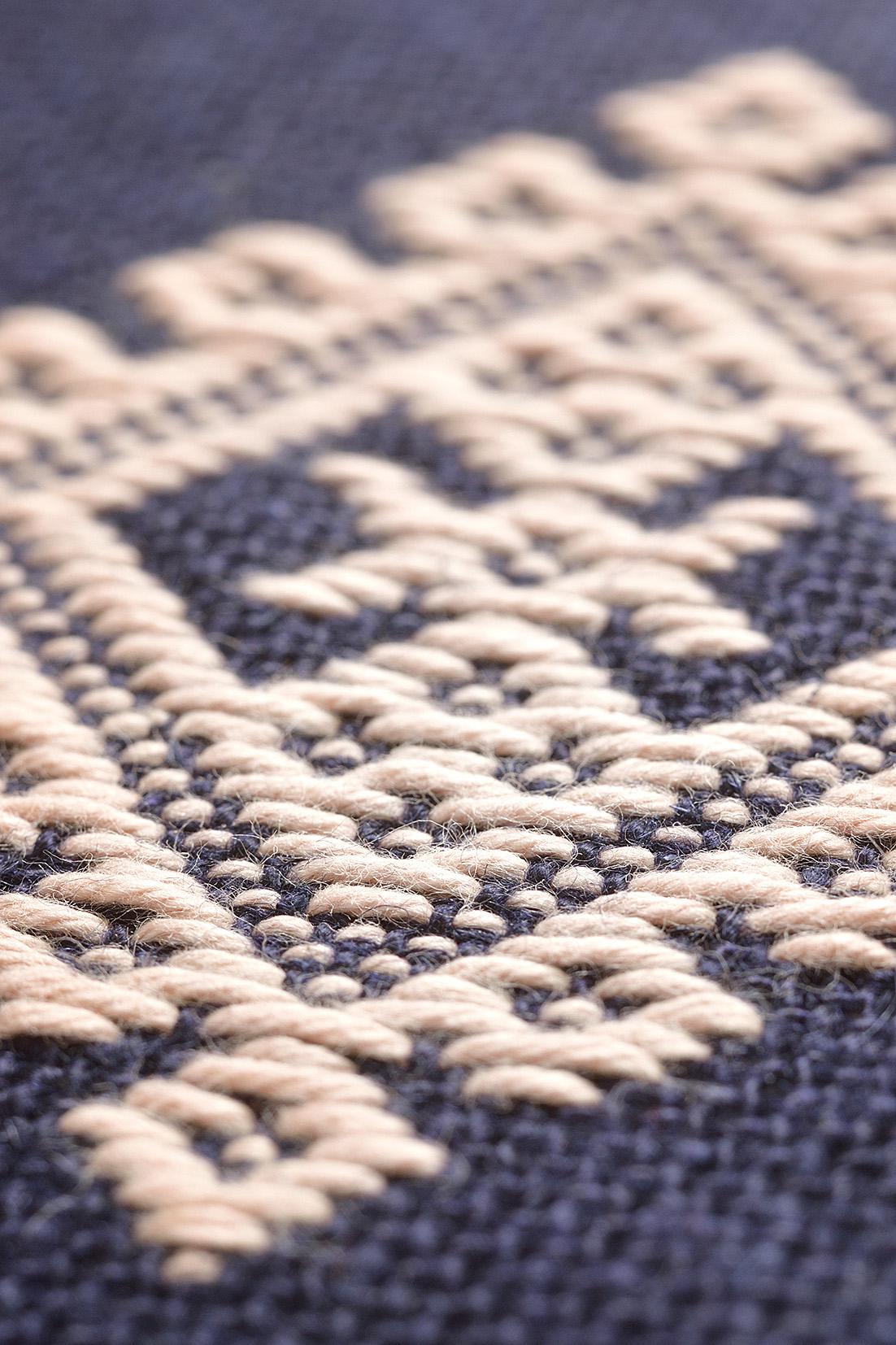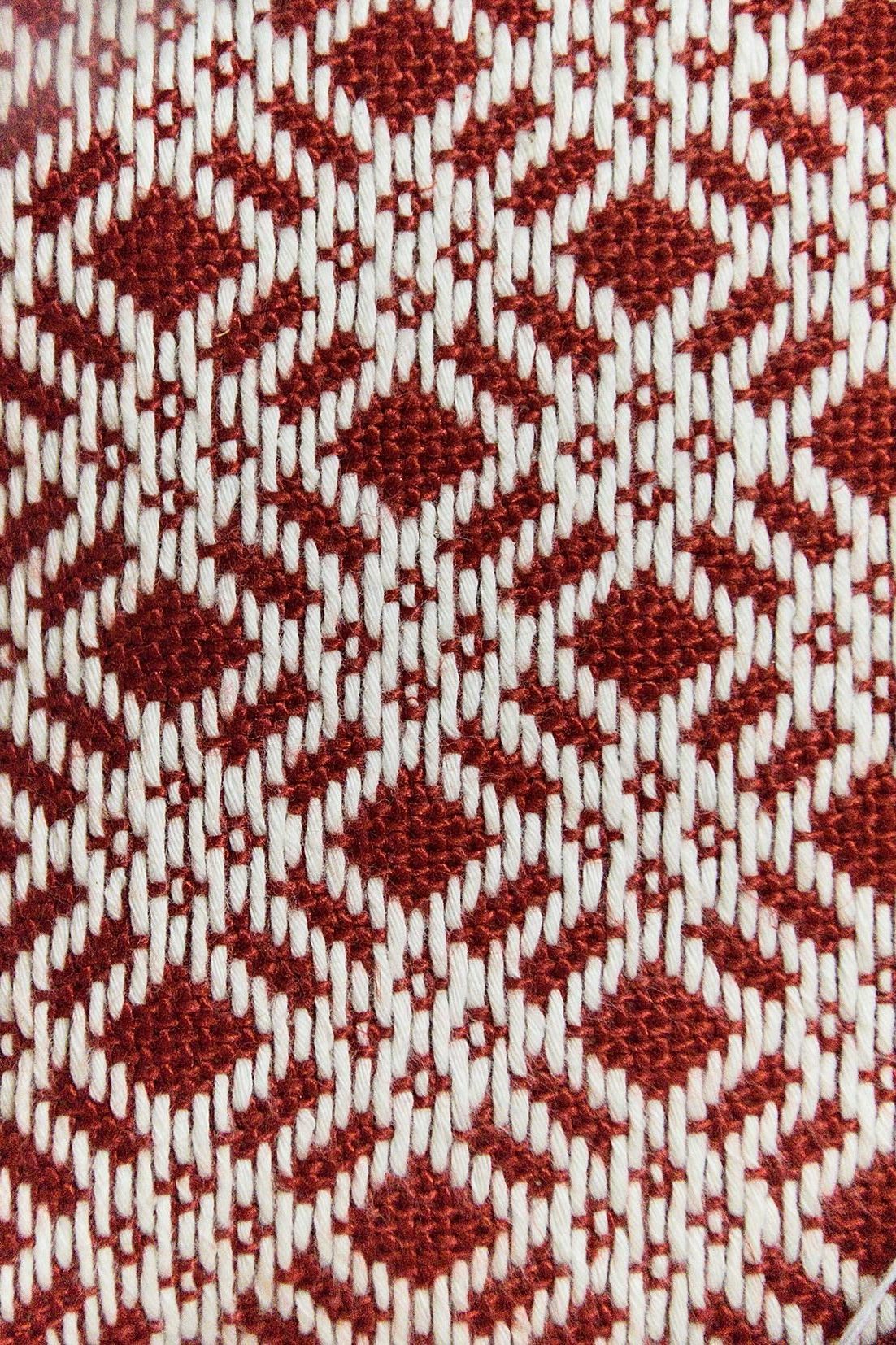津軽刺し子
Pronunciation: Tsugaru Sashiko
Production area: Hirosaki City, Aomori Prefecture
Tsugaru Sashiko is a folk craft passed down in the farming villages of the Tsugaru region, centered around Hirosaki City, Aomori Prefecture. Sashiko refers to decorative reinforcement stitching in which geometric patterns are embroidered into fabric with thread. Tsugaru Sashiko is also known as “Tsugaru Kogin Sashi.” During the Edo period, women in the snowy farming villages of Tsugaru stitched elaborate patterns into handwoven hemp cloth dyed with indigo, enhancing both durability and warmth. Sashiko flourished particularly in the Tohoku region, with three regional variations regarded as Japan’s Three Great Sashiko: Kogin Sashi of Tsugaru, Hishi Sashi of southern Aomori, and Shonai Sashi of the Shonai region in Yamagata.
Types and Characteristics of Kogin Sashi
Higashi Kogin
Produced east of the Iwaki River, including areas such as Kuroishi, Hirakawa, and the Ishikawa district of Hirosaki City. These pieces were often stitched onto coarser hemp fabrics woven with thick threads, with matching patterns extending from the front to the back body.
Nishi Kogin
Made west of the Iwaki River, in regions such as Nishimeya Village and the Iwaki and Soma districts of Hirosaki City. Because the cloth was woven with fine ramie threads, the stitched patterns are exceptionally intricate. Distinctive stripes alternating black and white thread at the shoulders earned this style the nickname “Shima Kogin” (striped Kogin).
Mishima Kogin
Created downstream of the Iwaki River, primarily in former Kanagi Town (now Goshogawara City) and the former Shariki and Kizukuri villages (now Tsugaru City). It is characterized by three bold, vivid stripes. Surviving examples are extremely rare and highly valuable.
Modoko
The basic motifs of Kogin Sashi are called Modoko, of which about 40 patterns are known today. By skillfully combining these, larger and more intricate geometric designs are created.





















